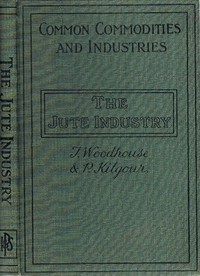| Summary |
"The Jute Industry: From Seed to Finished Cloth" by T. Woodhouse and P. Kilgour is a detailed scientific publication written in the early 20th century. The book explores the extensive processes involved in the cultivation, processing, and manufacturing of jute, shedding light on its significance in the textile industry, particularly following the pivotal role it played during World War I. It aims to educate readers by covering everything from the agricultural practices for growing jute plants to the technical intricacies of turning the raw material into finished products. The opening of the book serves as an introductory preface, establishing the context and importance of jute as a textile fiber. It highlights the relative undervaluation of jute compared to other fibers like cotton and wool, particularly before its raised prominence during the Great War, where it was crucial in the production of military supplies. The text outlines a brief history of jute's introduction to Britain, its gradual acceptance, and the industry's evolution, stressing the relevance of jute in contemporary textile manufacturing. The authors emphasize the educational intent of this publication, noting that it will benefit both students and practitioners by providing a comprehensive overview of the jute industry. (This is an automatically generated summary.)
|

